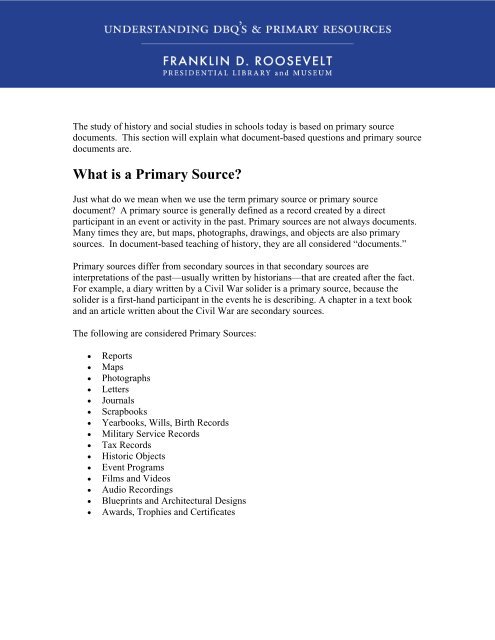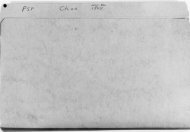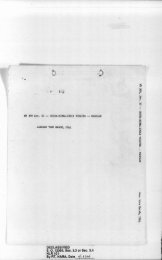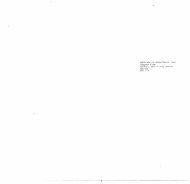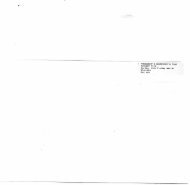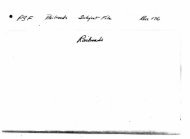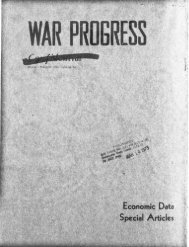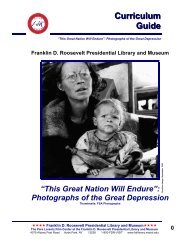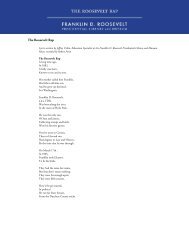What is a Primary Source?
What is a Primary Source?
What is a Primary Source?
You also want an ePaper? Increase the reach of your titles
YUMPU automatically turns print PDFs into web optimized ePapers that Google loves.
The study of h<strong>is</strong>tory and social studies in schools today <strong>is</strong> based on primary source<br />
documents. Th<strong>is</strong> section will explain what document-based questions and primary source<br />
documents are.<br />
<strong>What</strong> <strong>is</strong> a <strong>Primary</strong> <strong>Source</strong>?<br />
Just what do we mean when we use the term primary source or primary source<br />
document? A primary source <strong>is</strong> generally defined as a record created by a direct<br />
participant in an event or activity in the past. <strong>Primary</strong> sources are not always documents.<br />
Many times they are, but maps, photographs, drawings, and objects are also primary<br />
sources. In document-based teaching of h<strong>is</strong>tory, they are all considered “documents.”<br />
<strong>Primary</strong> sources differ from secondary sources in that secondary sources are<br />
interpretations of the past—usually written by h<strong>is</strong>torians—that are created after the fact.<br />
For example, a diary written by a Civil War solider <strong>is</strong> a primary source, because the<br />
solider <strong>is</strong> a first-hand participant in the events he <strong>is</strong> describing. A chapter in a text book<br />
and an article written about the Civil War are secondary sources.<br />
The following are considered <strong>Primary</strong> <strong>Source</strong>s:<br />
Reports<br />
Maps<br />
Photographs<br />
Letters<br />
Journals<br />
Scrapbooks<br />
Yearbooks, Wills, Birth Records<br />
Military Service Records<br />
Tax Records<br />
H<strong>is</strong>toric Objects<br />
Event Programs<br />
Films and Videos<br />
Audio Recordings<br />
Blueprints and Architectural Designs<br />
Awards, Trophies and Certificates
<strong>What</strong> <strong>is</strong> a DBQ (Document-based Question)?<br />
When students answer document-based questions, they become detectives searching<br />
evidence for clues. A DBQ (document-based question) <strong>is</strong> designed to build students’<br />
critical thinking skills by asking them to interpret, analyze and synthesize information<br />
from primary sources.<br />
The goal in using document-based questions <strong>is</strong> to get students to look beyond the obvious<br />
interpretation of a primary source to understand not just what the document, object, or<br />
artifact shows and says, but more importantly what it means. Students begin to realize<br />
that sometimes h<strong>is</strong>tory <strong>is</strong> written based on interpretations of very small fragments of<br />
evidence. And so the question of who <strong>is</strong> doing the interpreting, as well as the quality and<br />
quantity of the evidence being examined, become very important considerations.<br />
How Are <strong>Primary</strong> <strong>Source</strong>s Helpful in Learning?<br />
Using primary sources in the classroom helps students develop the critical thinking skills<br />
that make learning tangible, enjoyable and memorable. <strong>Primary</strong> sources are helpful<br />
because they allow students to learn to:<br />
Interpret<br />
Explain<br />
Apply<br />
Clarify<br />
Evaluate<br />
Form Opinions<br />
Compare and Contrast<br />
Empathize<br />
Describe<br />
Assess<br />
Establ<strong>is</strong>h Perspective<br />
Identify Contradictions<br />
Weigh Generalizations<br />
Analyze Raw Data<br />
Examine Evidence<br />
Draw Conclusions


